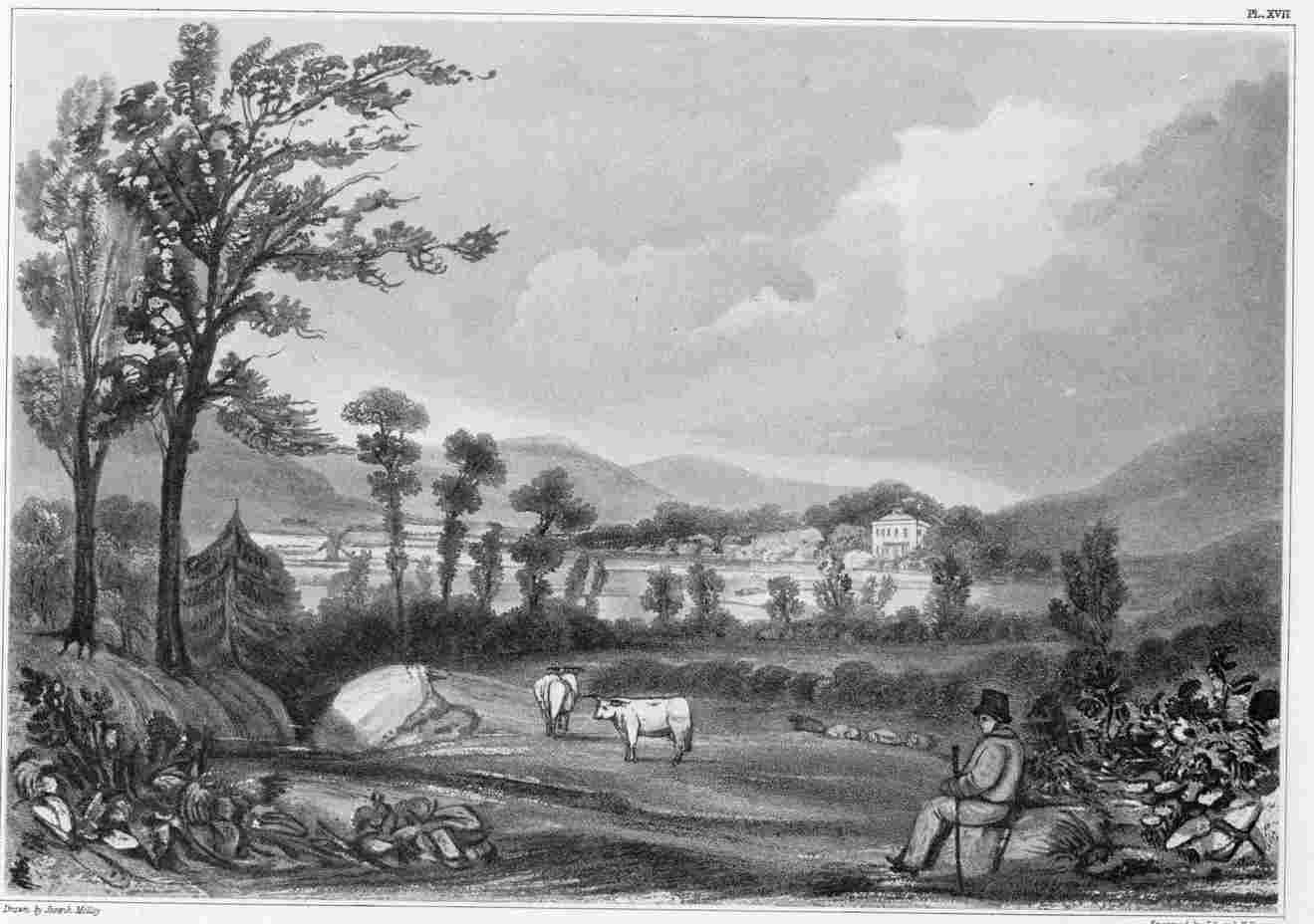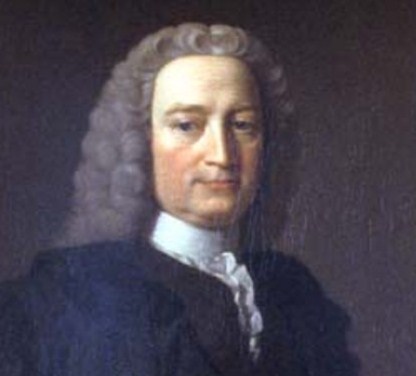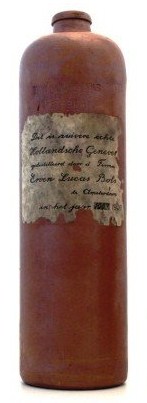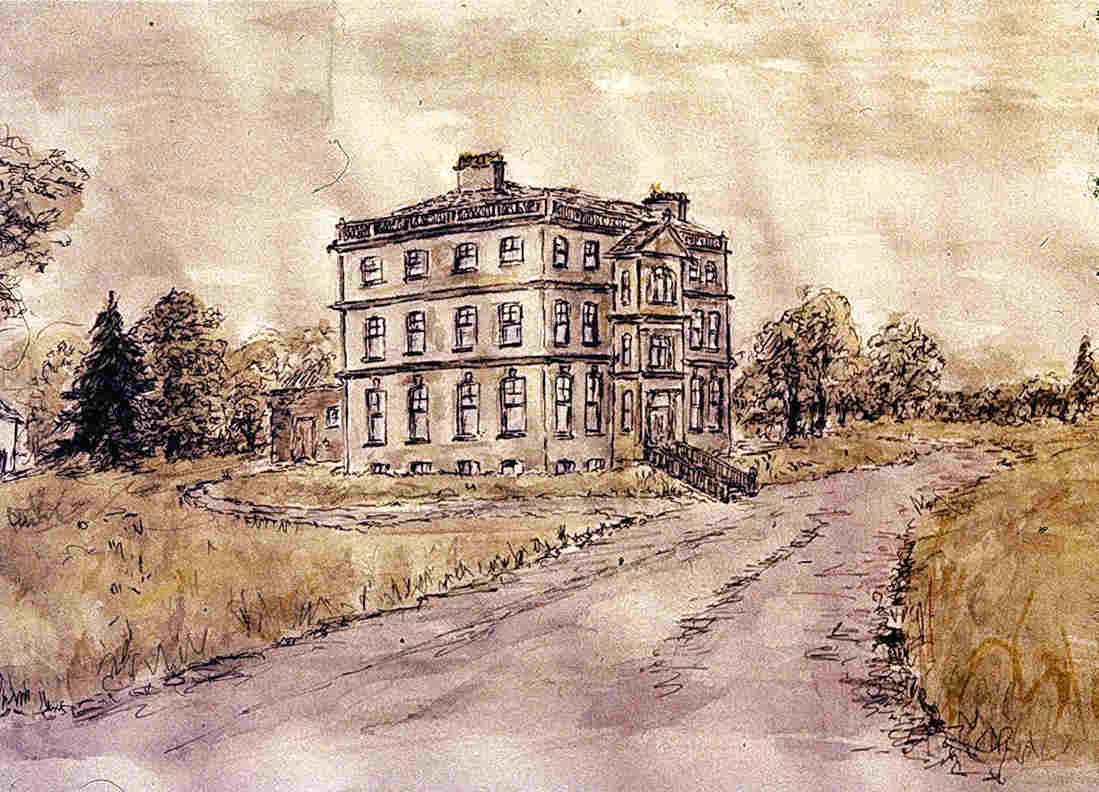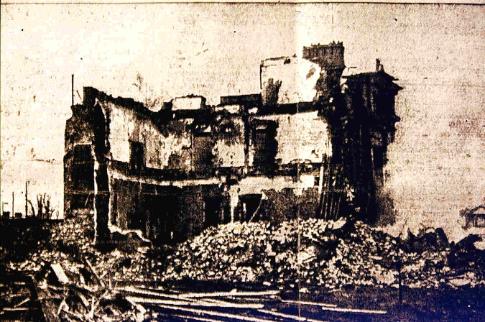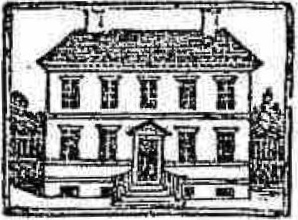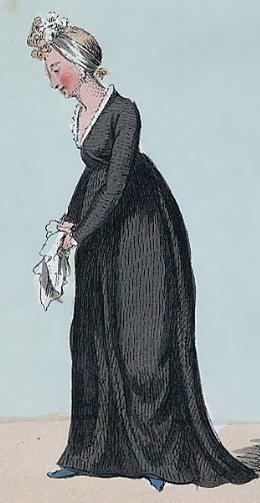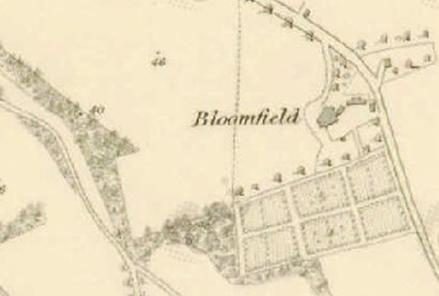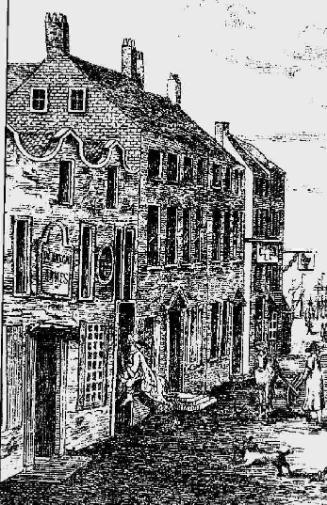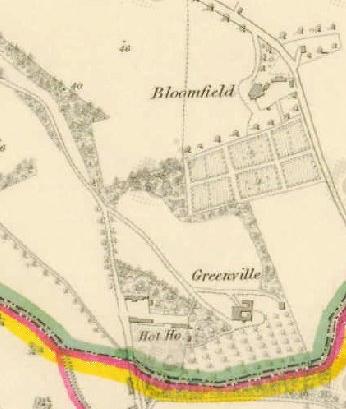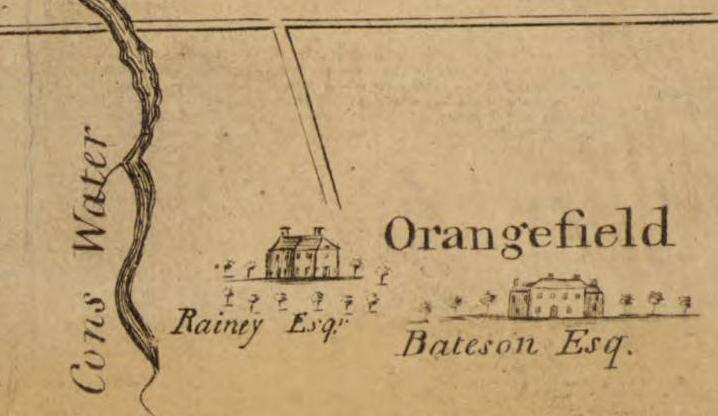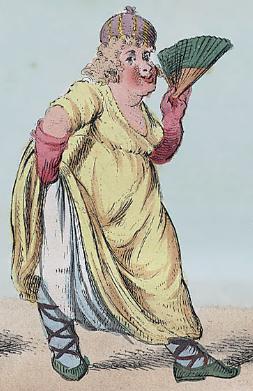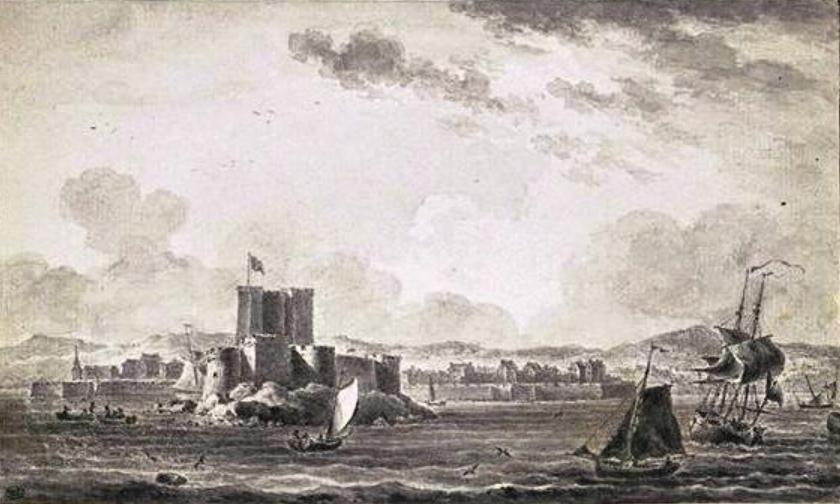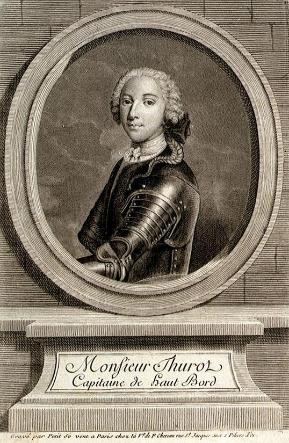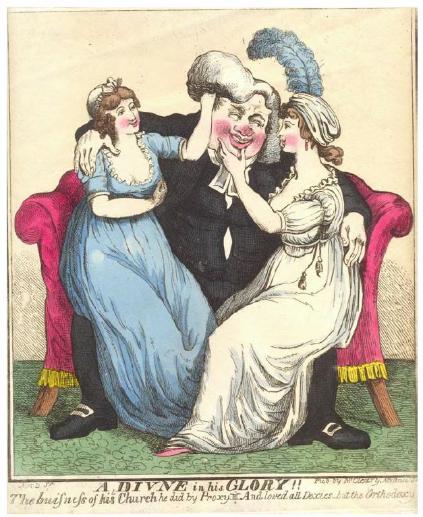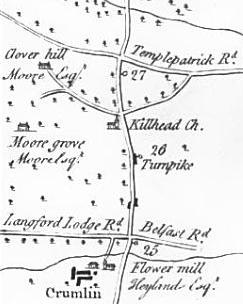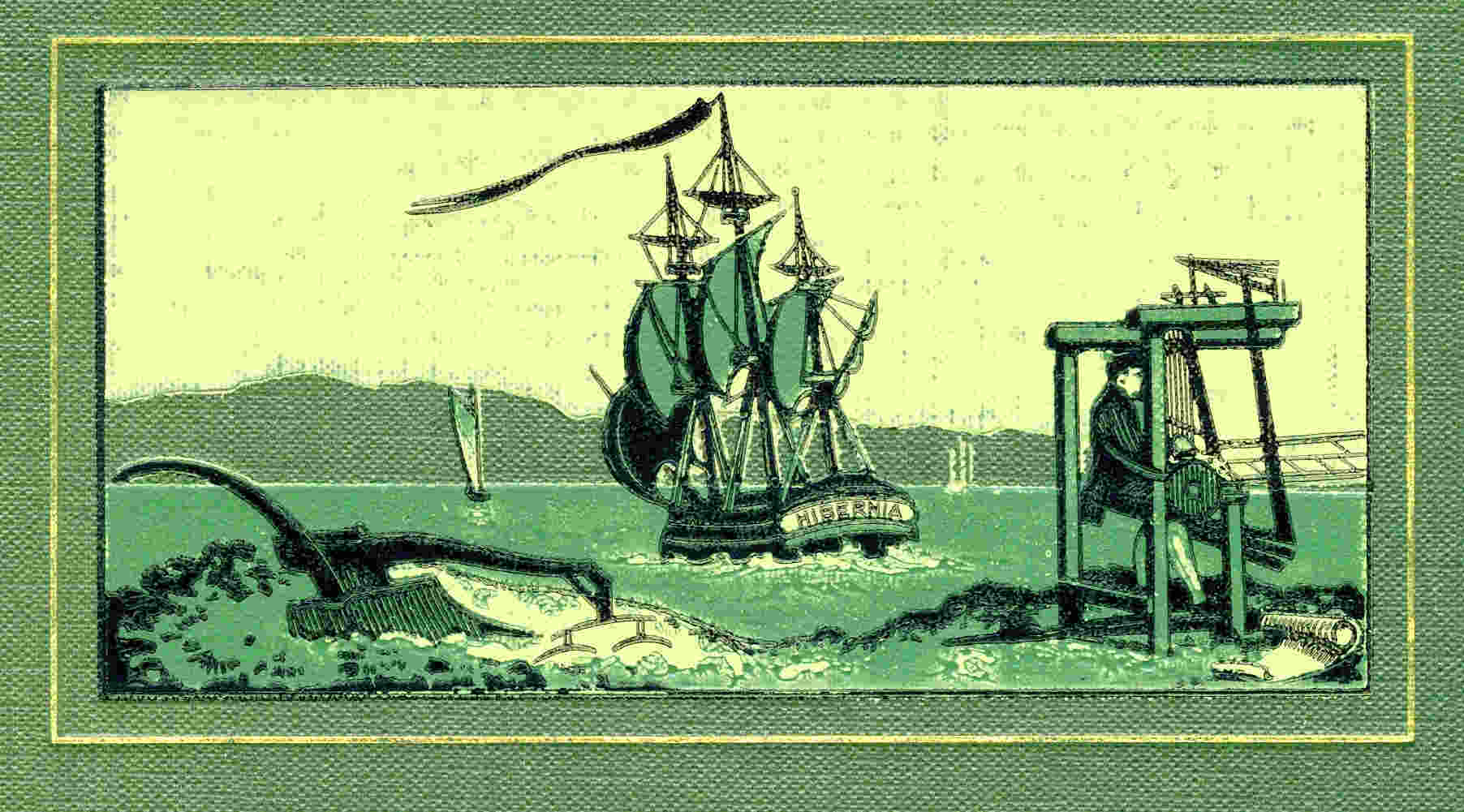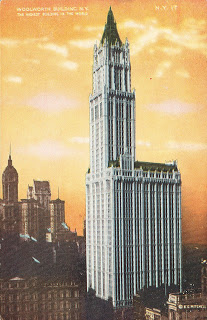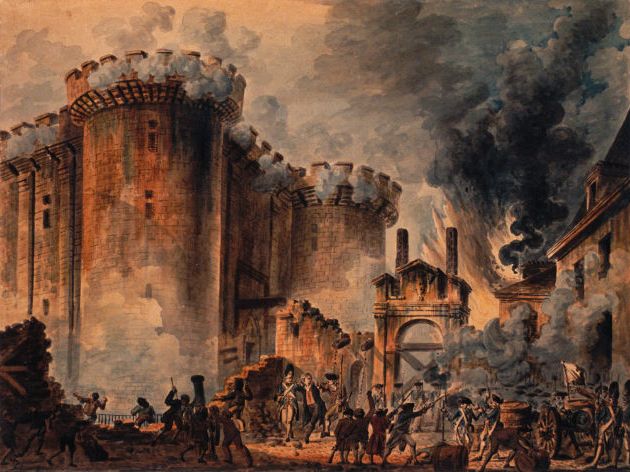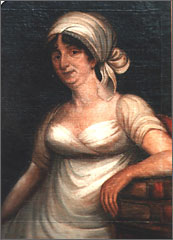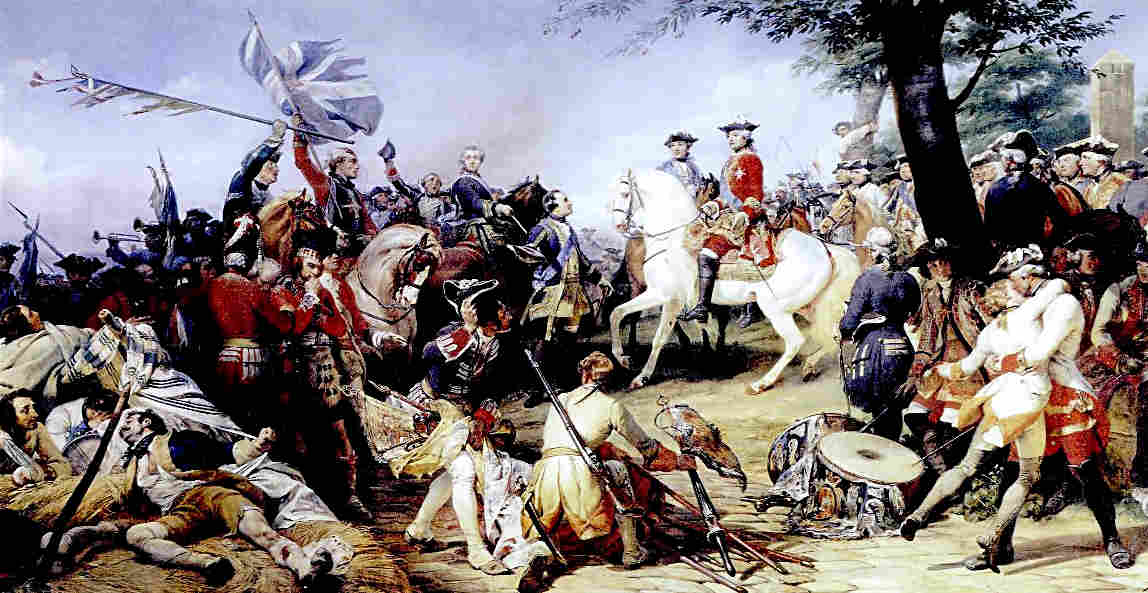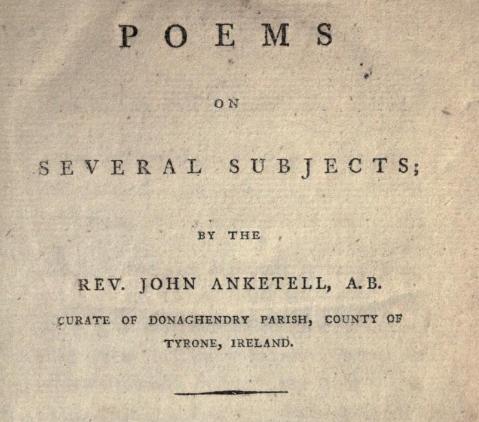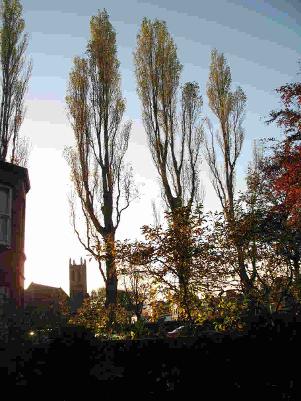This page explores the first known owners and occupiers of Bloomfield House and farm up to 1798.
Introduction and Orangefield
Bloomfield, as the
name for a house and farm adjacent to Belfast, only makes a first
appearance during the latter half of the 18th century.
Like too many modern house-names and street-names, Bloomfield doesn't seem to relate to any geographical landmark or historic connection.
However its name does accord well with those of its neighbouring "big houses": Orangefield and Greenville.
Their names reflect the rural and scenic nature of the area in those days. It will be many years before the village of Bloomfield appears, but the house names sit well with
Oliver Goldsmith's Sweet Auburn from 1770.
Sweet Auburn! loveliest village of the plain;
Where health and plenty cheered the labouring swain,
Where smiling spring its earliest visit paid,
And parting summer’s lingering blooms delayed, ...
It's ironic that Goldsmith was decrying the destruction of a village and its surrounding agricultural land to make way for ornamental gardens.
The Bloomfield story is one of Belfast merchants buying agricultural land to build substantial homes with some ornamental gardens but maintaining the locality's farming.
A village springs up as the result of adjacent industrial development. Gradually the farmland becomes more valuable for suburban housing development, aided by the coming of the railway.
The village is subsumed within the city. The big houses are demolished to make way for neat semi-detached houses.
Later, even the shops in the former village become less viable and lose their sense of focus as the era of the shopping centre dawns.
Joseph Molloy's idealised c.1829 drawing of "Orange-Field House" is difficult to relate to the likely real scenery of the time, never mind the near impossibility of distinguishing the details of the 18th century house or matching it to its footprint on the O.S. six inch map of c.1834. This house, perhaps replacing the 1743 house (see below), was itself replaced by a Victorian mansion c.1857.
Nonetheless, the idyllic surroundings of Joseph Molloy's drawing (published in 1832) certainly encompass the mood and the setting to which wealthy Belfast merchants must have aspired.
Orangefield House predates Bloomfield House by some 33 years. Orangefield’s most important 18th century occupants were the Bateson family. Read more about Thomas and the Batesons here.
Thomas Bateson (1704-1791) sold up his Lancashire estates and moved to Belfast, probably during the 1720s, becoming one of Belfast’s most important merchants. Mussenden, Bateson & Co. were wine merchants in Winecellar Court and they had strong trading links with the West Indies.
Daniel Mussenden, James Adair and Bateson created Belfast’s first bank, Mussenden, Adair and Bateson in 1752.
It only lasted five years. The next attempt to establish a bank in Belfast wouldn’t be for another 30 years.
Thomas Bateson acquired Orangefield in an agreement (Memorial No. 117861 - see PDF below) dated 22 March 1752 with ‘Rebecca Hunter, then the wife of David Hunter, late of Orangefield in the County of Down in the Kingdom of Ireland Esq., ... styled David Hunter of the Island of Saint Helena Esq., ... etc., ... for the price or sum of two thousand one hundred and thirty nine pounds ten shillings and eight pence to be paid by the said Thomas Bateson ...’
PRONI, at D971/34/A/5 has an Agreement, dated 30 July 1764, between Bateson and Francis Hutcheson of Dublin (see pic and paragraph about Hutcheson below) ‘relating to the road built by David Hunter, late owner of Orangefield, leading from Orangefield otherwise Mulnahogohy to the Newtown to Belfast Road, and crossing Hutcheson’s property in Ballyhackamore.’ That Agreement further confirms the original owner of Orangefield as David Hunter.
PRONI has a reference to Hunter at T679/237. It’s in the 1745-1761 Marriages and Burials for Belfast, St. Anne’s (Shankill), Connor, Antrim:
Kell, William - Volunteer in Captain David Hunter’s company, buried at Shankill. 20 January 1745 [=1746].
And there’s this, from Aris’s Birmingham Gazette, Monday, 03 March 1746, page 2:
Last Week was shipp’d for Belfast in the
North of Ireland a fine Train of Artillery, for the Use of the
Protestant Volunteers in that Part of the Kingdom, commanded by David
Hunter, Esq.
The background to this was the War of the
Austrian Succession in Europe, the ongoing threatened French invasion
of Britain, and Bonnie Prince Charlie and the Jacobites’ attempt with
French and Irish support, to regain the throne lost in the 1688
‘Glorious Revolution’. Charles was defeated at the Battle of Culloden
on 16 April 1746.
David Hunter had been employed by the British East India Company (EIC) and he must surely have
been affected by the French capturing Fort St George at Madras (now
Chennai) in September 1746. The Fort was recovered by the British in
1748. See the PDF below which includes correspondence with Fort St George
mentioning David Hunter.
Otherwise, there’s a dearth of information about Hunter in local records.
Where did he come from? Was he born in Ireland? Had he purchased or inherited the lands around Orangefield?
Hunter was described (perhaps by someone with a grudge!) as ‘a person of capacity ... but extremely haughty, and so bigoted to his own opinion’. He was an EIC Captain commanding ships for the Company possibly from as early as 1721. Hunter was appointed the Lieutenant (or Deputy) Governor for the island of St Helena by the EIC in 1747 (the EIC had long established plantations on that strategically important island in the South Atlantic).
In 1751 Hunter was instructed to lead an EIC expedition to take possession of the island of Negrais in Burma – more of a political act than a business decision. The expedition was based on disastrous misinformation about Negrais, its climate and its ability to provide ample food.
He reached the island on April 26th, 1753 and was living on board ship on 20 September when he despatched his first report to Madras. Because of considerable ill health Hunter requested he be allowed to return to Madras, but that was refused.
Hunter died on board his ship at Negrais from fever on 24 December 1754. History has tended to blame him for the resultant tragedy – not helped by him refusing to use his depleting rations to feed his enslaved workers and sending them out instead to fend for themselves, resulting in a mutiny. The following PDF provides details of Hunter’s earliest mentions, his will, the Orangefield lands, his wife’s genealogy and various reports on the tragedy of Negrais.
Hunter’s distinctive new house at Orangefield was nearly finished in 1743, according to The Antient and present State of the County of Down, containing A Chorographical Description, with the natural and Civil History of the same. Illustrated by … , by Walter Harris and Charles Smith, published in Dublin in 1744.
... Nor must we omit to mention Orangefield, a new and elegant House and Improvement of David Hunter Esq;, a Mile and half S. E. of Belfast, begun the last Year, and brought already to a considerable Degree of Perfection. The House is an oblong Square of 60 Feet by 40, consists of four Rooms on a Floor, and is four Stories high, coined with Freestone, and belted with the same at each Story, besides the Windows and Door-Cases: And as this Gentleman has travelled in the East-Indies, he has followed the Fashion of that Country in covering his House with a flat Roof, without arching, which is laid on strong Burghers or Joists, and secured from the Weather by a Cement made of Brickdust, Lime, and Blood. A little Time will shew whether this sort of roofing will answer the purpose in this moist Climate. Mr. Hunter has laid out also Gardens, Orchards, Lawns and other Improvements suitable to the House, which perhaps is one of the best in the Country.
Note: Francis Hutcheson (1721-1784) with property at Ballyhackamore and Drumalig, Saintfield, Co. Down, was the only son and heir of
the great Saintfield-born philosopher of the same name (1694-1746).
The
father (pictured left, from an oil painting c.1745 by Allan Ramsay) is regarded as the founding father of the Scottish Enlightenment - one of his pupils was Adam Smith.
Hutcheson's son enjoyed success as a composer of part-songs, glees and catches under
the name of "Francis Ireland", but his day job was as Francis Hutcheson, "Doctor of Physick",
in Dublin. He was professor of chemistry at Trinity College, Dublin (1760-1767); twice president of the Royal College of Physicians of Ireland; consultant physician to a number of Dublin hospitals; and he served on the music committee for the Rotunda Hospital concerts from 1774 until his death.
The doctor’s son, in turn again with the same name, the Rev Dr Francis Hutcheson, was the Rector of Donaghadee.
Perhaps the Hunter family retained a residence on the
Orangefield demesne: PRONI (LPC/439 and T662/38) has copies of a will
dated 12 November 1781 for James Hunter, Orangefield, Co.Down. Might this have been David Hunter’s nephew as mentioned in his will?
Thomas Bateson likely rebuilt or remodelled Orangefield House from the flat-roofed Hunter abode. Bateson’s house was described in 1817 as "a handsome square edifice", but was replaced by a new Orangefield House c.1857. The Bateson children, the family’s refined taste in music and Orangefield’s panelled walls are displayed here in Strickland Lowry’s painting said to date from 1762, though I suspect it’s perhaps a little later.
Population of Belfast town
1,000
2,000
5,000
8,500
13,000
20,000
The Donegall family, descendents of Arthur Chichester, were the landlords of Belfast - absentee landlords after Belfast Castle had burnt down in 1708.
The Fifth Earl of Donegall, Arthur Chichester, created the First Marquess in 1791, inherited the title in 1757 and finally began to set things right, although he remained an absentee for most of the time, preferring his stately home, Fisherwick Park, in Staffordshire.
The Earl paid for Belfast’s new St Anne’s Parish Church and for the town’s Exchange, 1769, adding a top floor in 1776 to create the Assembly Rooms - now (2023) a building under serious threat of being left to rot. The Earl also donated the land for the Poor House and for the White Linen Hall.
His son, the Second Marquess, was the
first member of the family to actually take up residence in the town in
1802, though for all the wrong reasons: he was trying to avoid his
creditors.
Initially, the town’s growth had been very slow
because of the short leases which were a disincentive to investment.
Things began to improve from the mid 1760s onwards with improved leases, some of which demanded demolition and rebuilding, sometimes specifying the height and the quality of the new buildings.
Business improved for the town's merchants.
Click on the thumbnails on the right for (1) a map of Belfast and its surrounding area from Taylor and Skinner’s Road Maps of Ireland, surveyed in 1777 and corrected down to 1783, (2) Lawson’s 1789 map of Belfast, published as an inset to his Chart of Belfast Lough, and (3) an outline of Belfast town, after James Williamson’s map of 1791.
Please note that the listings in Lawson's 1789 map has No.4 as "St Mary's Church" instead of St Anne's Church.
Click on the thumbnails below for images
of Belfast town in the latter half of the 18th century. The Long Bridge,
providing relative ease of access to Co.Down, was completed around 1685 and
much repaired across the 18th century.
James Patrick, merchant and brewer
One of the successful merchants during these years was James Patrick - an unknown but very important figure in the development of Bloomfield. That will come in 1775. So who was he?
In 1755 James Patrick was assisting one of the town’s leading merchants, Daniel Mussenden, by bringing 200 guineas to Belfast, presumably from Dublin (PRONI D354/885, 10 October 1755).
He also placed an advertisement in the Belfast News Letter, 18 May 1756, page 2:
To be Sold by Auction on Monday next, the
24th Inst. at the House of Mr JAMES PATRICK in North-street,
8 Hampers
of Old French Claret in Bottles: The Sale to begin at 11 o'Clock. To be
set up each Hamper separately.
In January 1757 James Patrick was one of many involved with the linen trade who were campaigning for "our Brown Linen Cloth exposed to Sale, as the Law directs, open and in Folds: And we are confident that if the Practice
of bringing Linen to Market at full Breadth and tied up, be continued,
the Faults concealed are so great, and the Frauds committed so numerous,
that it must end in the destruction of our Manufacture, and
consequently in the ruin of this Kingdom. ..."
Just one month later, in the Belfast News Letters of 10 and 15 February 1757, James Patrick, merchant of Belfast, was selling "his leasehold interest, held under Lord Donegall (39 years left) in a Bleaching Green with all the bleaching materials (except a Beetling Engine) - plenty of water in the dryest season. Together with 24 acres of land adjoining it, situated on the Forth River, within a mile and a half of Belfast. There is a convenient dwelling house on the land, together with several small houses for bleachers, all of stone and lime."
A few weeks before Christmas that year,
James Patrick, along with some of the great and good, was collecting
money for the poor and also assessing how many poor people there were.
Over the next few years he was advertising a rich variety on sale from his premises in Belfast's North-street:
- a variety of teas, new bag and pocket hops;
- new and old Glocester [sic] Cheese;
- imported new figs (LH pic), raisins and lemons;
- Holland gineva (a popular type of gin - RH pic);
- a parcel of Petersbourg Hemp sold on very reasonable terms;
- fine green tea,
extraordinary good rum; etc.
- The list goes on!
In 1759 James Patrick diversified into salt and lime, "the quality of both, esteemed by sufficient judges, in no respect inferior to any made in Ireland. And in order to accommodate such as may want considerable quantities of Lime, living near the shore on either side the lough of Belfast; he proposes to send it by water, and deliver it at any convenient landing place within two or three miles of the town, at 10d. per barrel; and will send it by land carriage at 1d. per barrel for each mile, over and above the price at the works."
St Anne's, Belfast, has a baptism record
for James, son to James Patrick, 11 June 1761. Assuming this to be the
same James Patrick, this son died some time thereafter.
In 1786 we know that Robert Patrick Esq., Ensign in His Majesty's 50th Regiment of Foot, was the only son of Hannah Patrick, widow of James Patrick, late of Belfast, merchant (see PDF below).
Knockbreda Graveyard has a grave for the family of Hugh and Rachel Patrick.
Was Hugh Patrick (c.1749-1821) a relative of James? He is most likely the Hugh Patrick, a baker of Berry-street, listed in Joseph Smyth's Belfast Directories of 1807 and 1808.
More details about James Patrick, including leases for three lives or 99 years for properties in North-street and Custom House Lane in July 1767, his brewery and malt-house in North-street, and his signing of the 1775 Dissenters' Petition for Belfast are listed in this PDF:
It was this James Patrick who built a new dwelling, Bloomfield House, in 1775. It would indeed be a nice connection if he fell in love with this part of North Down as he was buying barley for his North-street brewery from the Owen O'Cork mill!
In April 1775 he was advertising in the Belfast News-Letter, page 2 (04-07 April): 'WANTED, A Person capable of taking Care of a Kitchen Garden and a small Farm. Apply to Mr. James Patrick. Belfast, 6th April, 1775.'
In the same newspaper, 29 December 1775 / 2 January 1776, page 2, James Patrick was one of the many Belfast merchants, traders and principal inhabitants who signed a petition seeking to promote peace, ease trade restrictions and vote against grants to fund the war effort in America.
Alas, James Patrick never had the opportunity to enjoy his new house at Bloomfield. He died on Monday 20 May 1776, described in the Belfast News-Letter (21-24 May 1776, page 3) as 'sincerely regretted by a numerous acquaintance; he was a lively and entertaining companion, a good friend, an obliging neighbour, and always ready and liberal in every charitable work'.
His widow, Hannah Patrick, was left to sort out his estate:
Belfast News Letter, 5-9 July 1776
To be set [meaning to be let or leased] for any Term of Years, and entered upon immediately, the House and Brewery, in North-street, lately possessed by Mr. Patrick, with a large Malt-Kiln capable of making betwixt four and five hundred Bolls of Malt in the Season; Vaults, Lofts, and Cellars, with a Mill for grinding Malt. Also a large well-enclosed Yard, almost opposite to the above, on which were lately built a large Stable, Coach-house for two Carriages, Place for three Cows, with a large strong Loft over Stables and Cow-house that will hold a great Quantity of Hay or other Goods. The House will be set either with or without these Offices.
To be let also, for the term of eight Years, from the first of November next, the House, Garden, Orchard, and Farm of Bloomfield, containing about 27 Acres, (Tithe free) situate in the Townland [of] Ballyhackamore, and Parish of Holywood, within a Mile and quarter of the Town of Belfast, generally allowed to be the most beautiful and healthy Situation in this Country; the Land has been highly improved, all limed within these few Years, and otherwise manured; the House new built and well finished, consists of large Kitchen, Dairy, Pantries, Cellar, Room for Servants, Parlour 18 by 24 Feet, and four Bed-Chambers, Closets, &c.
As also the new Salt and Lime-Works, in the Town of Belfast, to be set for eight Years, from the first of January next; two new-built well finished Houses in Skipper’s Lane, lately possessed by Mr. J[ames] Murdoch, to be set. Proposals for any of the above to be made to Mrs. Patrick.
Belfast, July 8, 1776.
Out in the country, away from breweries and salt works, the house at Bloomfield had been “new built”.
It appears to have had well-developed, limed and manured farm-land and an orchard, so it's likely that this newly built house replaced an earlier, smaller farm house. Was it too called Bloomfield? More information needed!
This "new built" Bloomfield House was definitely not the one that survived until the 1930s.
When was it rebuilt or remodelled? By which one of its later occupants?
The parlour – the best room in the house – was of substantial size and a sign of superior social status. However, the description in the advertisement seems to suggest a smaller house than the one drawn by John Auld (below).
Bloomfield House, drawn by John Auld.
Bloomfield House occupied the land where Bloomfield Park is nowadays, behind the Fryar Tuck fish and chip shop at the Bloomfield Road roundabout.
If we were to assume the accuracy of John Auld's drawing, Bloomfield House was a rectangular house: a three-storey block, Palladian in style, over a basement. It had four-bay sides and a five-bay entrance front, with central pedimented breakfront which appears to have Diocletian windows on the top floor above the main door. There is a hipped roof and balustraded roof parapet.
Was the drawing sketched from early memories or had the artist drawn it around the time when the building was about to be demolished around 1938-1939? Does anyone have a photograph of Bloomfield House? If so, please do contact me.
An architecturally-informed colleague gave his reactions to the building as drawn by John Auld:
The breakfront is very odd - set quite a bit forward, yet not a proper porch, and with string courses that don't line through with the rest of the house for some reason - you might get that if it was a staircase, often found like that at the back, but surely those front windows are not onto a staircase.
As for the rest of the windows, up till 1860 it would have been very uncommon to have plain sashes like those bottom ones, and division of the top sashes in a house as big as that into four panes would be very unlikely till late 19c. Those could of course have been later alterations, and the picture appears to show the building on its last legs rather than in its prime.
Perhaps the porch was originally ground floor only, then raised up and the original fenestration behind was replicated on the front of the raised porch? The Diocletian window on the front elevation would have been a possibility for early 18c which might have tallied with the 1775 date if the clients were fairly conservative.
RH pic: One of very few surviving photographs shows Bloomfield House really on its last legs - being demolished at the end of the 1930s.
A 1784 advertisement in the Belfast News Letter refers to a lease for “the remainder of 31 years, of which about 22 are yet unexpired”.
Clearly a new or renegotiated lease had been created in 1775 when Bloomfield House was built.
Since writing most of the above paragraphs, Eddie McIlwaine of the Belfast Telegraph kindly published an appeal for further information (February 2013).
As a result, I was sent photographs of Bloomfield House, possibly in the 1860s, and another c.1938. These are now accessible on the Robert Boyd page of this website.
It proves that the house was either rebuilt or considerably remodelled, with a doffing of the cap to a vague Greek revival style. It's also clear from that photograph just how John Auld might have been misled by his childhood memories.
However, the architectural style of the original Bloomfield House remains a mystery. I believe it was more
likely a small to mid-size Georgian House over a basement - the sort of
house illustrated in the woodcut illustration pictured above and used regularly
in the Belfast News Letter during the early 19th century, drawing attention to houses to let or for sale.
Mrs Patrick had her hands full. She didn't just have the house and the businesses to contend with.
There was the harvest as well.
Belfast News Letter, 20-23 August 1776 (and 23-27 August 1776), page 1.
To be sold by Auction, at Bloomfield near Belfast, on Saturday the 31st August inst. for ready Money, sixteen Cocks of exceeding good well-saved Hay, and four Acres of good Oats on the Foot.
August 22, 1776.
Mrs Patrick managed to sell an eight year lease for the new Bloomfield House in 1776, because it comes back onto the market in 1784.
So who lived there between 1776 and 1784 when the next Bloomfield House advertisements appeared?
RH pic: Widow caricature, 1799, by Isaac Cruikshank (c.1756-1811).
John Hamilton, merchant and banker
Bloomfield was a substantial house and the annual rent and fees were considerable. The advertisements placed in August and October 1784 (see below) might suggest that the new resident had been John Hamilton, a notable merchant and banker in Belfast.
There are interesting connections: in March 1777, John Hamilton and Mrs Patrick were both named in a Newsletter advertisement for the North Street brewery, malt-kiln, vaults, house, cow-house and a post-chaise.
Coincidentally or not, in May 1784, the leases for the salt works, and the house and its offices in North-street were once again on the market - "contact Robert Lilburn or John Hamilton".
John Holmes, John Ewing, John Brown and John Hamilton were all members of the First Presbyterian Church, Rosemary Street. Their bank, unlike the first one (1752-1757), lasted ten years before closure. By then, John Hamilton was the only remaining John.
Very likely he was the same banker who, with Hugh Montgomery, James Orr and John Sloan founded the Northern Bank in 1809.
So, might John Hamilton have bought the lease for Bloomfield in 1776?
Just for the record, Mrs Hannah Patrick died in 1790, as listed in the church records of St Anne's (Shankill) on 18 April.
The Belfast Newsletter recorded "The death of Mrs Patrick, relict of the late Mr James Patrick." (16-20 April 1790 (page 3)).
Hamilton associated with many of Belfast's top merchants. In 1773 he was Secretary of the Bachelors' Annuity Company which met in the Market-House to elect a chairman, secretary and committee. He donated £200 to the building of a Linen-Hall "for the sale of white linens in the town of Belfast, pursuant to the resolutions entered into at the town-house on the 15th of November 1782".
Mussenden’s Bank (with partners Adair and
Bateson) had closed in 1757. The next attempt at founding such an
institution was in 1787.
This new Belfast
Bank was known colloquially as the "Bank of the Four Johns".
Belfast News Letter, 2-6 April 1784, page 3.
To be sold by Auction
At Bloomfield, near Belfast, on Monday the 12th instant; all the Household Furniture, consisting of Beds, Bedsteads, Blankets, Chairs and Sopha [sic] to match, Pier and other Glasses, Dining and Card Tables, a good eight-day Clock, with many other useful articles – The Auction to begin at 11 o’clock.
Dated April 3rd, 1784.
Pier glasses were traditionally placed
between window openings, very often over a console table, to reflect more
light into a room.
The weather was not good that month:
Belfast News Letter, 9-13 April 1784, page 3 (the original advertisement, as above, was also repeated on page 1 of this newspaper).
The Auction of household furniture at Bloomfield, near Orangefield; was put off on account of the inclemency of the weather to this day.
Bloomfield, 13th April, 1784.
Presumably by 13 April the weather had improved and the house was emptied at auction, ready to be sold once again.
Belfast News Letter, 27-31 August 1784
The House and Farm of BLOOMFIELD, containing about 25 acres, pleasantly situated, in the Townland of Ballyhackamore, County of Down, distant about a mile from Belfast. The Lease is for three young lives, all well – or the remainder of 31 years, of which about 22 are yet unexpired.
Enquire at John Hamilton, Belfast. – Dated 30th August, 1784.
It seems more likely that John Hamilton was acting as an agent for the occupier.
In this next advertisement, is Bloomfield Hamilton's "Dwelling-House"?
On balance, it looks more like an opportunistic add-on to the main advertisement.
Belfast News Letter, 12-15 October 1784
To be sold by Auction
At the Donegall-Arms Inn, in Belfast, on Monday the first day of November next, at one o’clock afternoon; The Leasehold Interest of the House and Farm of BLOOMFIELD, situate in the Townland of Ballyhackamore, in the county of Down, distant about a mile from the town of Belfast, containing about twenty-five acres, Cunningham measure, held by lease for three young lives, all in being, or 31 years, 21 of which are yet to come and unexpired, at the yearly rent and fees of £31. 8s. 4d. For further particulars apply to John Hamilton in Belfast.
Dated Oct. 12th, 1784.
N.B. The Interest of the Lease of the Dwelling-House in which the said John Hamilton now lives to be disposed of. – Apply at above.
LH pic: The Donegall Arms Inn, High Street, in 1786. Drawn by John Nixon, it's the nearest building on the left-hand side.
John Hamilton was a friend of Martha McTier (1742-1837) and her brother, Dr William Drennan (1754-1820) whose correspondence is a rich source for historians of this period. On 14 October 1784, Martha wrote to William in Newry:
"Jack Hamilton was near killed yesterday by a piece of timber falling from the top of his house on his head. He has escaped however with a cut of three inches length on his temple."
Was that house Bloomfield?
In 1801, for £7,000, David Gordon (1759-1837), one of Belfast’s important bankers, bought Summerfield, Dundonald (now the site of Knock Golf Club), which Martha McTier refers to as “formerly Mr John Hamilton’s”.
The plot thickens and is confused by a reference to Bloomfield in a quite different advertisement that had appeared two years earlier - see below.
Mrs Martha Hutchinson - mother-in-law
Belfast Newsletter, 25-28 June 1782, page 3.
To be let, from November next, for such term of years as may be agreed upon, the farm of Prospect, near to Killead Church, containing about 70 acres, Cunningham measure. There is an excellent farm house and good offices on the premises; great part of the land has been lately limed, and all in good heart. The house is most agreeably situated, on a rising ground, commands a full view of Lough-neagh, and of a most beautiful and improved country as far as Lurgan; – distant three miles from Antrim, nine miles from Belfast, and nine from Lisburn. Proposals will be received by Mrs. Hutchinson, at Bloomfield, near Belfast, and by Roger Moore, Esq; at Cloverhill, near Antrim.
14th June, 1782.
Who was Mrs Hutchinson? And what was her relationship to Roger Moore?
She was in Bloomfield House in 1782, so it looks as if Mrs Hutchinson might have been resident in Bloomfield House between November 1776 and March 1784 and used John Hamilton as her agent, specifically for Bloomfield.
The connection between Bloomfield, Mrs Hutchinson and Roger Moore of Clover Hill is well worth unravelling.
It's a mother-in-law story involving the neighbours: the Rainey family of Greenville House; plus the Hutchinsons, an important family of influential and wealthy clerics.
Mrs Hutchinson, née Moore, likely the sister of Roger Moore (1723-1784) of Clover Hill, Killead, Co. Antrim, was the wife of the Rev. James Hutchinson. A daughter, Henrietta Maria Hutchinson, was born to the Hutchinsons around 1757. Henrietta had at least one other sister (Martha) and a brother (John). Her father, the Rev James Hutchinson, died just two years after Henrietta's birth, in 1759.
Henrietta married William Rainey of Greenville (c.1745-1803) – the neighbouring ‘big’ house to Bloomfield House.
RH map shows Greenville in relation to Bloomfield.
This is from the 6 inch Ordnance Survey map published in the mid 1830s.
LH map shows Greenville in relation to Orangefield.
This is from James Lawson's map or chart of Belfast Lough, 1789.
Presumably at this stage there was no-one of immediate importance to qualify for a listing of Bloomfield and its occupant!
Henrietta and William had five sons and two daughters before Henrietta ("Harriet" to her husband) died on 22 August 1790, just 33 years old. Both are buried in Knockbreda graveyard where there is a large pillared monument with inscriptions on all four sides. William remarried (to Mary Anne Boyd).
For more information on Knockbreda Parish Church's fascinating graveyard and Georgian mausolea, see Knockbreda - Its Monuments & People, edited by Lydia Wilson, published by The Follies Trust, 2012, and available online here as a PDF.
So, while Henrietta (c.1757-1790) lived at Greenville with her husband William Rainey, producing her seven children, Mrs Hutchinson, William's mother-in-law, probably took up residence in Bloomfield House, providing appropriate and neighbourly child care and advice from 1776 to 1784.
Henrietta's sister, Martha, had married Joseph Garner (c.1754-1821). Martha McTier recorded in 1784 that "The Bishop of Down has offered Mr. Garner £1,500 for his house". Four years later Garner bought Castle Hill, becoming a neighbour of Martha McTier's. Mrs Hutchinson was living with the Garner family at that stage - and likely moved in with the Garners in 1784 after leaving Bloomfield.
PRONI has a letter (D607/B/279), dated 9 November 1790, from Mrs Martha Hutchinson (Henrietta’s mother) at the Garner's house, Castle Hill, near Belfast. The letter was addressed to Lord Hillsborough asking for a recommendation for her son Captain John Hutchinson of Bengal. Mrs Hutchinson makes a reference to the death of her daughter, Mrs Rainey (Henrietta).
Joseph Garner and his wife are buried in Drumbo graveyard, Ballylesson. Joseph died in 1821 aged 67, his wife Martha, née Hutchinson, died in 1802 aged 43 - pre-deceasing her mother. Mrs Martha Hutchinson herself died in 1807.
Mrs Hutchinson was comparatively wealthy:
Martha McTier mentions in 1805 that Mrs Hutchinson would leave one of
her grandchildren (Mrs Stewart, née Rainey) £300 when she died, "yet
only comes in for the third, and has declared the shares belonging to
her two boys shall accumulate for them."
One of Mrs Hutchinson's grandsons was
Col. John Hutchinson Garner (c.1792-1878) of Garnerville, Strandtown (he
had married his cousin Harriet and around 1859, their daughter,
also Harriet (1837-1875), married William Francis Howe (1838-1892) of
Ballytrim, and the couple emigrated to New Zealand). The Howe family is
detailed here.
William Rainey of Greenville was the fifth generation of the Raineys, a Presbyterian family which came to Ulster from Ayrshire in the mid-17th century. Dr Nini Rogers, writing in Knockbreda - Its Monuments & People, The Follies Trust, 2012, notes that Rainey "enjoyed family life, greatly extending Greenville House to hold his expanding family and entertain his siblings, in-laws and cousins ... easy-going in belief and religious practice, attending balls, drinking wine, playing cards, reading novels and going to the theatre." He "apparently never attended a place of worship and was known as an unbeliever."
The political climate and circumstances of the 1790s ensured that William Rainey would eventually need to rise to the occasion: he was appointed Deputy Governor of Co. Down and he became Captain of the Belfast Troop of Yeoman Cavalry in 1797, just before the 1798 Rebellion by the United Irishmen.
This PDF supplies genealogical details for the Rainey family including a couple of quotes from Martha McTier:
Roger Moore, Henrietta's brother, was a
larger than life character and, like his father John, a High Sheriff for
Co. Antrim (1750). His wife was Letitia Sharman which will eventually give a link to the Crawford family who lived in Bloomfield House at the turn of the century.
On Friday 22 February 1760, Capt. Roger Moore with 40 volunteers from Killead, all armed, along with Capt. Thomas Thompson’s 133 volunteers (81 of whom were armed) from around Antrim, marched into Belfast to oppose the landing of the French under Françoise Thurot at Carrickfergus (Source: Joy, Henry. Historical Collections relative to the Town of Belfast: from the earliest period to the Union with Great Britain, Belfast 1817).
RH pic: View of Carrickfergus, Co. Antrim, in the late eighteenth century, by Nicolas Ozanne (1728-1811).
Thurot landed his 600 men at Carrickfergus on 21 February 1760 and left on the evening of 25 February. The PDF below is Henry Joy's account of the negotiations between the French and the townspeople of Belfast over those few days:
Thurot died during a British naval attack on 28 February off the Isle of Man.
LH pic: an engraving of Françoise Thurot by Gilles-Edmé Petit (1694–1760).
The Raineys and Moores were landed gentry, but the Hutchinson family was also wealthy, thanks to the Church of Ireland. The Hutchinsons overflowed with men of the cloth, particularly bishops!
The deceased Rev. James Hutchinson had many brothers and sisters, including Francis Hutchinson, Archdeacon of Down, and Samuel Hutchinson, Bishop of Killala (whose wife, Sophia, was the daughter of the Rev. James Hamilton of Ballygraffan, Co. Down; their son, also James Hutchinson, became the Archdeacon of Achonry).
The father of these brothers and sisters was Samuel Hutchinson of Portglenone House. He was an Ensign in Lord Forbes’ Regiment at the Battle of the Boyne, 1690.
And, just to cause further confusion,
that Samuel’s brother was Francis Hutchinson DD, Bishop of Down and
Connor (1660-1739), a great opponent of witch-hunting. A family tree is available in the PDF below:
A Divine in his Glory, a caricature by Isaac Cruikshank, c.1810
According to family tradition, the Moores came to Ireland from Cumberland, England, during the James I plantations.
James Moore, a Quaker, was living on an extended estate in the townland of Ballinacree, Ballymoney Parish, Co. Antrim, as early as 1675.
Some details of the family are given in this PDF:
I believe it's safe to assume that the Roger Moore who features in the Bloomfield House advertisement alongside Mrs Hutchinson in 1782 was the father of the Roger who was buried in Belfast’s Clifton Street Cemetery on 14 September 1834. Roger jun. was described as "aged 71, a private gentleman, of Lodge House, from and born in the Parish of Killead, Clover Hill, Co. Antrim". In 1794, he too was appointed High Sheriff for Co. Antrim.
The burial ground “consisting of 1 rood” of the Roman Catholic chapel in the townland of Ballyquillan, parish of Killead, “was given gratuitously by Mr Roger Moore of Clover Hill” – presumably in 1816 when the new church was built. (Ordnance Survey Memoirs of Ireland - Parishes of County Antrim XIII 1833 - 1838).
This Roger Moore makes an appearance in
Martha McTier's correspondence in 1810. "Moor [sic] and K. Jones are
tired of Belfast and will set [lease] their house in Donegall Street
which was a dear one, and have taken Dobbs's in the country and set
Clover Hill to Davison, a young shopkeeper in Belfast." Moore was
married to Katherine Jones (c.1768-1841), the daughter of Valentine
Jones (who in turn was the son of Valentine Jones (c.1711-1805), a
leading Belfast wine merchant and rum and sugar importer with a
successful agency in Barbados).
Belfast's trade with the Caribbean had
grown considerably once the Irish trade bans with the American colonies
and Africa were lifted in 1781. An important figure was the wealthy
Belfast merchant and banker Waddell Cunningham (c.1729-1797) who at one
point unsuccessfully advocated for a Belfast slave trading company.
Martha McTier disliked him and thought him unscrupulous. Interestingly,
Cunningham was from the village of Killead, Co. Antrim.
Were there any business connections between Cunningham and Moore?
LH pic: Detail from Taylor & Skinner's map, 1778.
So, in March 1784, Mrs Hutchinson leaves Bloomfield, probably to live with her daughter Martha and son-in-law Joseph Garner, a household known for holding well-attended evangelical meetings.
1784 was also the year in which Mrs Hutchinson's brother, Roger Moore sen., died.
At this point there's a two-year gap in the history of Bloomfield House and Farm. Did an unknown, perhaps elderly, occupant take it on and was then unable to keep up the payments - or perhaps died?
Whatever the reason, there was an auctioneer's sale in June 1786, though, strangely, no mention of the farm.
There's also the slight possibility that these were the same house contents that had been proposed for sale in 1784.
Belfast Newsletter, 13-16 June 1786, page 3.
Household Furniture.
On Wednesday next the 21 inst. will be sold by publick Auction;
The entire Household Furniture of BLOOMFIELD, in the County of Down, about one and a half miles from Belfast; consisting of Mohogany [sic] Dining and Card Tables, Chairs, Field Bedsteads, Dressing-Glasses, Kitchen Furniture, &c, &c. – Also a complete Service of Table China.
N.B. Likewise a Phaeton, and a pair of very good draft Mares.
J.BAILIE, Auctioneer.
The Sale to begin at eleven o’Clock on Wednesday, and continued the following day.
Judging by the following advertisement, it would seem that James McVickar was the next Bloomfield occupant, from 1786 to 1789 - unless he was simply a speculative investor.
Return to the top of this page.
James McVickar, merchant and ship-owner
Belfast Newsletter, 14-17 July 1789, page 3.
Bloomfield House and Farm, County Down.
To be let for a few years, (from November next) as can be agreed on, the House and Farm of Bloomfield, containing 25 acres, Cunningham measure, on which is a good Dwelling, together with sufficient Office-houses, a large Orchard in full bearing, and Kitchen Garden; the Farm is highly improved, together with good ditches. The situation is remarkably fine, only one mile from Belfast; this place is very fit for the immediate reception of a gentleman. – Any person who may agree for it shortly, can be accommodated with the crop now on the ground. – For particulars apply to James McVickar on the premises.
Bloomfield, 15th July, 1789.
James McVickar is an interesting person and provides, through his son John, a fascinating link to New York.
One note of caution: this spelling is
most usually associated with the Antrim McVickars, particularly from
around the Ballymoney area. It's not a common name, but there could be
confusion, boosted by my over enthusiasm, in mixing up two quite different Jameses or Johns. Please feel free to point out the error of
my ways by offering fresh evidence!
James McVickar was a merchant in Larne to whom people could apply for passage to the New World on board various ships, certainly between 1761 and 1783. Application could also be made to John McVickar in Ballymena, most likely James's brother.
Based on advertisements in the Belfast News Letter, the ships included the Antrim to Philadelphia (1766 and 1767), the Jane and Isabella to New York (1775), the Lord Templeton to Philadelphia (1783) and the James and Mary to New York via New Castle, Delaware or Charleston, South Carolina (1767-1775).
James McVickar owned, or was a part-owner of the James and Mary, a ‘snow’, a three-masted brig (two masts with square sails and a small trysail mast).
Hibernia, front cover of Northern Banking Co. Ltd., An Historical Sketch, 1924
The trade
was passengers one way from Ireland and various goods the other way from North America - flaxseed,
flour, rum, sugar, potash, etc. He also imported deal (pine) boards from
Norway, iron from Gothenburg and flaxseed from Rotterdam.
More information on James McVickar's James and Mary from Richard K. MacMaster is available in this PDF on the right, though the quoted link seems now (2020) to be broken:
James McVickar was also the secretary of the Larne Volunteer Company between 1780 and 1783.
Why would this merchant who was so firmly anchored in Co.Antrim choose to move to Bloomfield?
Whatever his age was by June 1786,
judging by the significant reduction in his advertisements and
mentions in the newspaper, the period from July 1786 to June 1789 seems to have been a more relaxed
time for James McVickar.
Perhaps Bloomfield House was a suitable retirement property, looking across the Lough, as it did, to his Antrim homeland!
The PDF on the left lists many of McVickar's News Letter advertisements over the years.
James married his first wife, Mary Moore, around 1757. They had two sons and two daughters. Mary died sometime in the 1760s; James is said to have lived to be 99 years of age ("after 1801" has been quoted as his death date, but it might have been closer to 1804, when his son John made his second and final return visit to Ireland).
Given the McVickar family connection to Ballymoney, and James's marriage to someone with the Moore surname, might there be a link here with Mrs Hutchinson and her Moore family with its strong Ballymoney connections?
PRONI has copies of several deeds relating to James McVickar. D509/873 and D509/999, dated 1794 and 1796, refer to 222 acres of land in Ballyvesey, Co Antrim. McVickar is often referred to as James McVickar of Belfast, but these deeds label him as being "of Templepatrick" and another refers to "McVickar of Moylusk [Mallusk]".
John McVickar (1759-1812), James's eldest son, emigrated to New York in the late 1770s, probably joining his uncle’s export business there. “John and Nathan were sons of an Irish gentleman of moderate estate, and he [James] lost his first wife – their mother. He afterwards married a second time, to give a mother to his boys. She was not different from the general run of stepmothers, and the home ceased to be a home to them.
"Under these painful circumstances, John, the eldest brother, determined to abandon it and try his fortune in the Western Hemisphere. He told his younger brother that if he succeeded in New York, whither he was bound, he would send for him.” (Information about John McVickar comes from the writings of Derek Doran-Wood, quoting Walter Barrett and Samuel Relf Durand - some currently available online here.)
John McVickar's younger brother, Nathan, did indeed join him.
John was a elected a director of the Bank
of New York from 1793, one of the founders of the St Patrick’s Society,
a governor of the New York Hospital, a director of the Western and
Northern Coal Company and of the United Insurance Company. He was a
vestryman of Trinity Church and was one of the founders of St Michael’s
Church in Bloomingdale where he had a large mansion as his country
residence.
Genealogical information on the McVickar family was compiled in 1914 for one of many legal cases to clarify the proper title to parts of the land John had acquired in New York.
When John died in 1812, his mercantile business was one of the largest in New York with considerable imports of linen from Belfast and regular trade with the West Indies, Europe and China.
He also had huge land-holdings in New York and lived in a mansion on the site which was later acquired for the Woolworth Building on Broadway (see LH pic).
So from November 1789, Bloomfield House, with its farm, was available "to be let for a few years" and "was very fit for the immediate reception of a gentleman."
Who better than Thomas Bunbury?
In Paris the Bastille was stormed on 14 July 1789.
The French Revolution was well under way.
That October, Louis XVI and his family were taken from Versailles to Paris.
In Belfast in July 1792 there was a Meeting of the Harpers to distract the populace from revolutionary thoughts.
See here.
In September 1792 the French Republic was proclaimed.
The King, Louis XVI was tried in December and executed on 21 January 1793. War was declared on Britain.
The Storming of the Bastille, a watercolour by Jean-Pierre Houël (1735-1813); Bibliothèque Nationale Française.
This was the political background to the next News Letter
excerpt which mentions "Thomas Bunbury, of Bloomfield, Esq" in its final paragraph.
People
were opposed to the creation of a Militia, “a measure which can only
have Ministerial Influence for its object, which we deem burthensome,
and totally unnecessary, because the Volunteers of Ireland are our
natural and best Protectors; perfectly adequate to defend this kingdom
from foreign invasion …”
Belfast News Letter, 28 January - 1 February 1793
HOLYWOOD MEETING
At a Meeting of the Inhabitants of the Parish of Holywood, convened by publick Notice, on Wednesday the 30th of January, 1793,
JOHN KENNEDY of Cultra, Esq; being unanimously called to the Chair, it was
1st. Resolved unanimously, That as we prefer a Constitution consisting of King, Lords, and Commons, to any other, so we trust that our veneration for our most gracious Sovereign George the IIId. and his illustrious Family will ever continue unshaken.
2dly, Resolved unanimously, That we have with much satisfaction heard of his Majesty’s paternal recommendation of our Catholic Brethren to the consideration of Parliament.
3dly, Resolved unanimously, That the original excellence of our Constitution is almost annihilated by the corruptions which ambitious men have insidiously introduced into the Representation of the People, in the Commons House of Parliament.
4thly, Resolved unanimously, That we will most strenuously co-operate with ALL our countrymen in directing our exertions with united and unremitting energy to obtain a radical Reform in the Commons House of Parliament.
5thly, Resolved unanimously, That we remember with gratitude the essential services heretofore rendered to this our country by the Volunteers of Ireland; and as we now seem to be on the eve of a foreign war, we look forward with, we trust, a rational confidence to that truly patriotic association for defence from all our enemies, foreign and domestic.
6thly, Resolved unanimously, That we reprobate the establishment of a Militia in this kingdom – as a measure solely intended to encrease that patronage, of which administration already possesses but too great a share
Mr. Kennedy having left the Chair, and Mr. John McKee being unanimously called to it:
Resolved, (with one dissentient voice) That in comformity to the recommendation of the County Meeting held at Downpatrick on the 21st instant, we do appoint Thomas Bunbury, of Bloomfield, Esq; Mr John Jackson, junn. of Knocknagouny [sic], and Mr. John Purse of Cultra, to be the Delegates from this parish to the Meeting to be held on the 5th of next month at Ballynahinch and we do instruct our said Delegates to abide by the spirit of these our several Resolutions, as their rule of conduct in co-operating with the Delegates from the other parishes of this County.
In 1788, the year before Thomas Bunbury moved into Bloomfield, and the year in which Joseph Garner moved into Castle Hill, Bunbury was obviously on the lookout for somewhere to live. Martha McTier wrote:
Castle Hill is once more going to verify the country people's observation of being unlucky and often changing its inhabitants. Its present one is embarrassed and is about selling it to Bunbury, Mr Isaac's heir, who cannot be long the possessor. ... Bunbury I believe is not bright but if he brings pleasant people together that is enough. His uncle intended him for the law, but observing he never would be Lord C[hancellor] he put him into the army, under Harry Savage's tuition. What this [made] of him I may be able to tell y[ou some] time hence - the Hamills don['t move] till May.
"Bunbury, Mr Isaac's heir, who cannot be long the possessor [of a new residence]" reveals that many people knew that Thomas Bunbury and his wife were simply waiting for Thomas's uncle, Simon Isaac of Holywood House, to die so that the Bunburys would inherit Holywood House.
A momentary digression: the pics on the right are both from James Lawson's 1789 Chart of Belfast Lough. (1) is a detail which shows Orangefield and Greenville along with the North Down coast. (2) is a south perspective view of Belfast from Joy's Paper Mill, used as an inset on Lawson's map. The view was drawn by Stafford Wilson and the map or chart was dedicated to "the Earl of Donegall and the Corporation for Preserving and Improving the Port and Harbour of Belfast". The map was reproduced in A Short History of the Port of Belfast by D.J. Owen (Belfast, 1917).
A fine copy of Lawson's Chart or Map is available for study here from the American Geographical Society Library, University of Wisconsin-Milwaukee Libraries. The Bunbury family has a fascinating mix of ecclesiastical and military connections, recorded online here.
Thomas's father, also Thomas, was the second son of William Bunbury of Lisnavagh, Co. Carlow. Thomas senior's first wife, Catherine Campbell died in 1754, leaving a large family (ten children born, though only four survived childhood), amongst whom would be William Bunbury, MP for Carlow, the heir to Lisnavagh.
Four years later, Thomas senior wrote in his diary:
April 20th 1758. Married Miss Isaac this day & left Dublin for Kill directly after the ceremony where we got safe next day.
Thomas Bunbury (1760-1802), eventually of Bloomfield, was born in Dublin on 10 August 1760, the son of Thomas Bunbury of Kill (short for Killmagarvogue), Co. Carlow and his second wife Susanna Priscilla Isaac.
From this marriage, there was at least one daughter, Jane or Jenny (born 1759 - her godmother was a sister of Susanna's, Miss Montgomery Isaac) and one son, Thomas (his godfather was Susanna's brother Simon Isaac).
RH pic: Thomas's sister, Jane Bunbury (1759-1842). She married the Rev. Benedict Arthure, MA, LLD (1755 - 1798) and lived at Seafield House, Malahide, Co. Dublin.
Read more about this family on Turtle Bunbury's website here. Going back in time, at a public auction in Newtownards in 1705, Simon Isaac of Ballywalter, bought "Holywood townland and the Priory House and gardens in Ballykeel, which surrounded the old Priory church, and form what is now called the Priory Park" (Source: O'Laverty, 1880).
Simon Isaac was High Sheriff of Co. Down in 1719 and died in 1728.
He was succeeded by his son John Isaac, married to Jane (surname unknown). This was likely the John D. Isaac who was High Sheriff for Co. Down in 1733. John died in 1743 (Dublin Registry of Deeds) and was succeeded by his eldest son Simon Isaac, himself High Sheriff in 1747.
Perhaps John had a brother or uncle called Robert to explain this: Robert Isaac of Holywood House died 21 April 1771 aged 76. His wife, Anna Baillie, died 16 December 1781 aged 86 and is buried in Kilmegan graveyard. Robert was the father of Jane Isaac who married (1) Samuel Slicer, (2) Sir Timothy Allen, and (3) Matthew Forde of Seaforde on 21 January 1774. Robert was also the father of Deborah who married John Moore of Rowallan. This was indeed a well-connected family.
Simon Isaac of Holywood House (often written as Hollywood House) was a distinguished barrister who was called to the Bar at the Inner Temple in 1735. In 1767 he was the Governor of the Corporation of Horse-Breeders, Co. Down.
Susanna Priscilla Isaac was Simon Isaac’s
sister and there seemed to have been other sisters - both Kitty and
Montgomery Isaac are mentioned in Thomas Bunbury senior's diary.
I assume the Lieutenant John Isaac who died at the Battle of Fontenoy was a younger brother of Simon. He was an officer serving with the Royal Welsh Fusiliers during the War of the Austrian Succession. The regiment was decimated during the battle on 11 May 1745.
LH pic: La Bataille de Fontenoy, le 11 mai 1745, oil painting by Horace Vernet (1789–1863), painted in 1828.
Simon had no family and, as suggested by Martha McTier's comment, it seemed to be an open secret that Thomas Bunbury, his nephew (son of Thomas Bunbury of Kill and Susanna Priscilla Isaac) would inherit Holywood House.
Before moving up north to Bloomfield, Co. Down, Thomas Bunbury junior (1760-1823) lived at Lisbryan House, Borrisokane, near Nenagh, Co. Tipperary.
In June 1790, at Green Mount, Co. Tipperary, Thomas junior married Maria Greene, daughter of Michael Greene (1739-1812), said to have been a High Sheriff of Co. Waterford. Turtle Bunbury points out that Maria's mother Jane Greene, at her marriage 'a very beautiful young lady with £1,500 fortune', was born a Bunbury - a different branch of the family. They had at least ten children who survived into adulthood.
Lisbryan remained a Bunbury property. Thomas's second son, another Thomas (1793-1874) would live there in due course. His eldest son, Simon Bunbury Isaac, would inherit Holywood House on Thomas's death in 1823.
If Martha McTier's observations are correct, Thomas Bunbury junior might not have been the brightest spark, but he supported what is now the Linen Hall Library, founded as the Belfast Reading Society in 1788. It became the Belfast Society for Promoting Knowledge in 1792 a list of the Society's members was published in December 1798. Amongst the 80 names are those of Thomas B[unbury] Isaac, H.wood., along with William Rainey, John Holmes, Henry Joy and Thos. Bateson, Orangefield.
Thomas Bunbury also seemed to have read some poetry:
The following were among the subscribers to John Anketell’s Poems on several subjects, "printed for the author, by William Porter, Skinner-row", Dublin, 1793.
Co. Antrim subscribers included:
James Moore, Esq. Clover Hill.
Roger Moore, Esq. Clover Hill.
Co. Down subscribers included:
Rev. Henry Bunbury, Rostrevor
Thomas Bunbury Esq. Bloomfield
Miss Crawford, Crawford’s Burn
John Crawford, Crawford’s Burn
Arthur Crawford, Crawford’s Burn
Footnote: I know it's an unnecessary digression, but whatever the qualities of John Anketell's poetry, his lengthy Preface is worth reading (here) for its disgruntlement at his lack of preferment and particulary his diatribe against those who refused to subscribe, like the Lord Lieutenant, the Earl of Westmoreland, and those who gave too paltry a sum, like the Marquis of Downshire. A real case of how not to win friends and influence people! For more on the Rev. Anketell and his family, see here.
Thomas Bunbury was an executor of Simon
Isaac’s will in 1796. One condition of his inheriting the Isaac estates was that he would
add Isaac to his surname – and thus was born the line of Bunbury Isaac.
And so the Bunbury Isaac family moved into Holywood House. Bloomfield House was once more on the market.
Belfast News Letter, 12-16 December 1796, page 3.
TO BE SOLD
The Interest in the Lease of BLOOMFIELD
The Beauty of the Situation of the House, the earliness of the Garden, and the richness of the Grounds make it worth the attention of any Gentleman now wanting a Country Residence. – A Servant attends to shew the House, &c. – Any person wishing to purchase, to apply to Mr. Isaac, Holywood.
Holywood, 15th Dec. 1796.
If there wasn't much to report during the Bunbury family's sojourn at Bloomfield, Martha McTier reported some of the gossip of later years. In 1799:
Among the fashionable vices crept in
here, married ladies [------] to give rise either to calumny or
du[-----]. Mrs John Huston [John Holmes's daughter] has been much talked
of and is sent with two of her children to her mother for the summer at
Whitehaven. Mrs [Bunbury] Isaac is notorious, though she and her
present gentleman, Sir James Bristow, preside at our next coterie. His
wife looks as if she was their confidant.
Jean Agnew notes that Sir James Bristow
of Holywood was knighted in 1787 and was the brother of the Rev. William
Bristow, Vicar of Belfast.
Within a couple of weeks of Thomas Bunbury Isaac's death in September 1802, Martha McTier wrote:
Mrs [Bunbury] Isaac, a little devil from the South, has long been keeping Sir James Bristow, and both before and since her husband's death, thrown off all regard to appearance, and so artfully have they managed that the weak, drunken, well-meaning husband thought Sir James his very best friend, and left him guardian to his children - only two indeed are supposed his, and the debts contracted by this worthless woman, with her jointure, fortune of £1,400 etc. to younger children, will be £1,000 per annum off the estate. All the executors have refused to act and the lady and Sir James with his unfortunate wife now all live together at Holywood.
In 1806 Martha commented that:
Three physicians have been attending the son and only child of poor Lady Bristow, who but for him would have long since left the brute her husband, who only retains her as companion to his kept mistress Mrs Isaac. He was ten years old ... He is dead, and she little better than a statue.
In 1823, that "little devil from the South", Thomas Bunbury Isaac's widow, Maria, married the Very Rev. Hon. George Gore, Dean of Killala. It was her second marriage and his third. He was the youngest son of Sir Arthur Saunders Gore, 2nd Earl of Arran of the Arran Islands. George died in 1844 and Maria in 1856; they had no children. (Sources: Turtle Bunbury's website and Burke's Peerage).
The Bunbury Isaac line lasted only for a couple of generations. This next was published in The London Gazette on 24 September 1858:
Whitehall, September 15, 1858
The Queen has been pleased to give and grant unto Charles Thomas Vesey Bunbury Isaac, Esquire, Major in the 82nd Regiment of Foot, and Vesey Thomas Bunbury Isaac, Esquire, sometime an Officer in the 82nd Regiment, younger sons of Simon Isaac, late of Dunkirk, in the Kingdom of France, and formerly of Dromore Cottage, in the county of Monaghan, deceased, and grandsons of Thomas Bunbury Isaac (formerly Thomas Bunbury), of Bloomfield and Hollywood [sic], in the county of Down, Esquire, also deceased, Her royal license and authority that they may henceforth resume their paternal family surname of Bunbury only, and be called and known by the names of Charles Thomas Vesey Bunbury, and Vesey Thomas Bunbury, respectively:
And also to command that the said royal concession and declaration be recorded in Her Majesty’s College of Arms, otherwise to be void and of none effect.
Meanwhile, back to Bloomfield House.
Just like the period 1784 to 1786, there's another two year knowledge gap now, 1796-1798, in Bloomfield's history.
Did it lie empty?
Did someone occupy it for two years?
Was the year 1798, with its United Irishmen uprising, at all significant in the departure of a Bloomfield occupant?
Answers on a postcard please (an email will do!).
Belfast News Letter, 26 January 1798, page 3.
BLOOMFIELD
TO BE SOLD BY AUCTION
On FRIDAY the 9th February next, at the Hour of Two o’Clock, at PAT. LINN’S, Belfast,
THE LEASE of the HOUSE and FARM of BLOOMFIELD, lying in the Townland of Ballyhackamore, County Down, distant from Belfast one Mile and a Half. The Beauty of the Situation and goodness of the Land are so well known as to render any further description unnecessary.
25th January 1798
The House and Offices are in good repair and fit for the immediate use of a genteel and numerous family.
From the 1819 Belfast General and Commercial Directory for 1819: "Mr. Patrick Linn's White Cross Hotel, also in Castle Street, is an old established house. Mr. Linn himself is long and well known in town, and known always to be extremely obliging."
